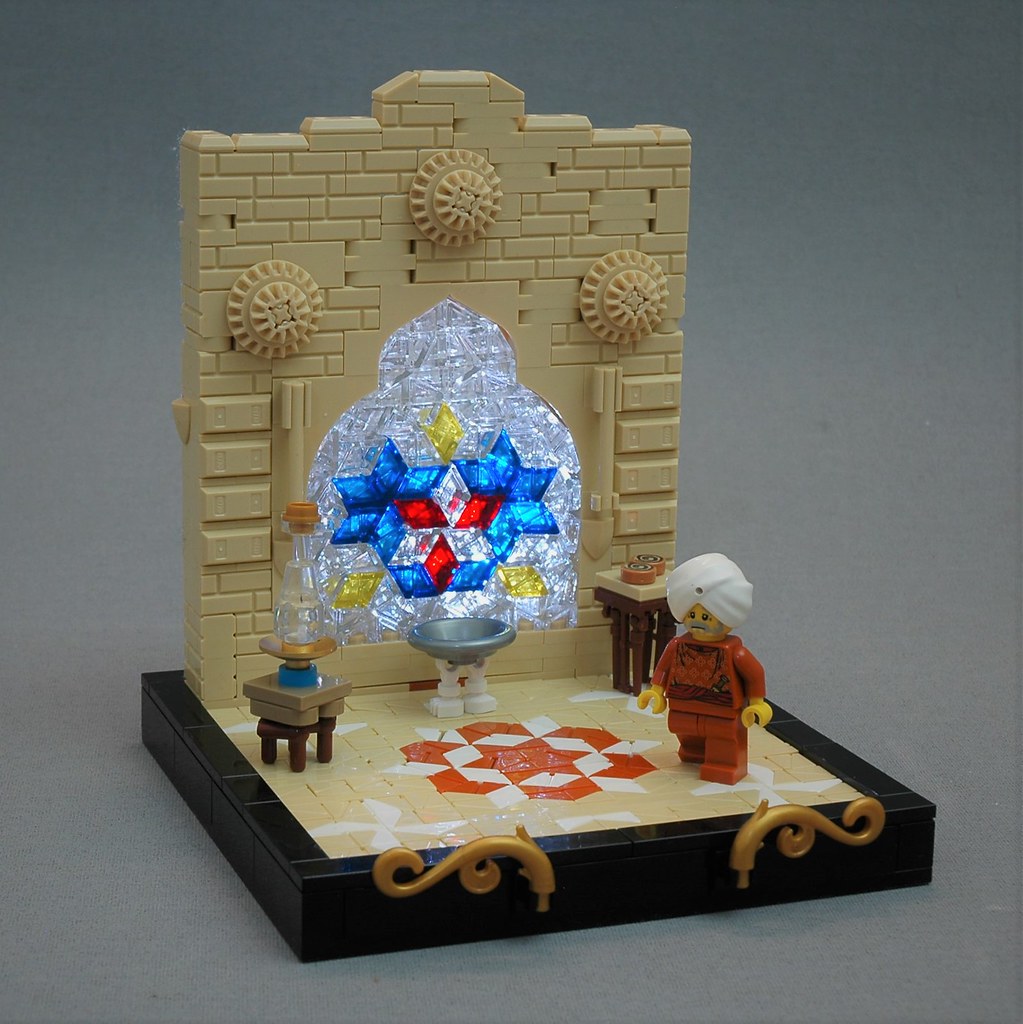Sure, 1×1 studs or square plates certainly can get a mosaic job done, the fairly recent LEGO Art sets are case in point, but there is always more than one approach to an art form. In this recent LEGO model built by Andreas Lenander, he admittedly takes a crack at a different way to mosaic with some inspiration from Katie Walker.
The approach here is primarily utilizing the 1×1 cheese slope in the creation of the mosaic. Lenander not only does a beautiful floor with this process of mosaic-work, but he also creates an amazing brick-built wall that has the aesthetic of a stained glass window using translucent clear 1×1 cheese slopes in popping complimentary colors. Of course, the structures formed by this technique are not stable as there aren’t any stud connections made here, but as long nobody is turning this model upside-down or giving it a good shake, we have an amazing build to look at. Pictured below is a closer look at the painstaking process.


While the MOC is pretty neat, the mosaics are pretty standard and formulaic, save the edges of the window. And the floor is much more stable than you would expect.
You might be surprised by the stability. In LDraw, two cheese slopes placed slope to slope like this form a perfect cube. The tall end is about two plates high, and the short end about half a plate. I had a MOC fully designed and ready to build, which called for four instances of cheese wedges being placed in such a manner. Turns out they stack a little taller than expected. I had to tweak my design to leave a half-plate gap, which, fortunately, is not too obvious when pairing clear with black.
On the floor, especially, that should be stable enough for transport. I don’t know if you can shake it vigorously, but when you build a rigid border like this has, and pack it full of cheese wedge squares, they reportedly fit tight enough that I think you could tip it upside-down after they’re all in place (think of the game “Don’t Break the Ice”, where you knock blocks of ice free with a small mallet). The window, I’m less certain about. The mid-eastern double arch complicates things in a weird way. If the wall separates from the base, absolutely that wouldn’t stay intact, but if there’s a hidden component that forcibly compresses the top of the wall against the bottom (like vertical Technic beams on the back, or plates attached to periodic studs), they might similarly be locked in place by friction alone.
People who build like this have often explored ways to keep the model from collapsing, or learned tricks from others. I once saw this really cool image of a tropical beach that was made by pouring loose 1×1 round plates into an ant arm container. When I asked the creator how she keeps them from shifting around, she told me she just packed it so tight that when she closed up the top it presses down on everything, preventing any parts from shifting around.